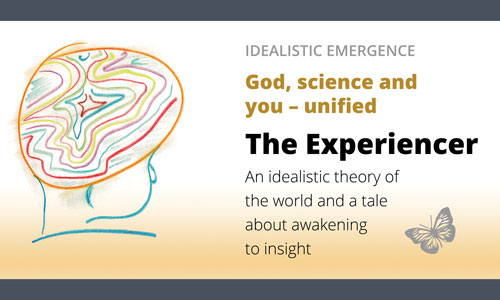Normalisation is the opposite of dissociation, the opposite of creating new roles.
Normalisation is trying to integrate everything that happens into your role now, which is probably your primary role – the one you created for yourself when you realised that you are something in your own right.
Normalisation is thus the very mechanism of interpretation. It is your authentic self trying to understand new impressions by comparing them to existing knowledge and integrating the unknown into known concepts.
It's like when something pink ... that looks a bit like ... an apple! ... is judged to be an apple.
The culture we have created is full of demands and expectations. No one, absolutely no one, can live up to them. At the same time, far too many of us walk around thinking that the others are coping alright, just not me.
This game is based on fear and is unnecessary!
What do we do when reality becomes so intrusive that we cannot downplay it?
We wait for the longest, like a frog.
If you put a frog in a pot of water and place it on the stove, the frog will sit there and feel the surroundings getting hotter and hotter. It still stays seated. It is cold-blooded and can adapt to all temperatures – up to a limit. If it gets hotter, it dies.
But the frog does not jump out of the pot, even if it can at any time. It normalises.
We can thus normalise to the extent that it seriously hurts or kills us.
I often call this the «cake problem», after Queen Marie Antoinette. She was, probably mistakenly, assigned the quote «Qu'ils mangent de la brioche!» – let them eat cake – when she learned that the people were short of bread during the French Revolution in the late 1700s.
She «stuck her head in the sand», another widely used image. She tried to normalise the ongoing uprising, as she used to solve problems, by «sweeping it under the rug» – further the same.
All this is done to quell fear, but it often ends in dissociation, chaos or death. The frog and Marie Antoinette died, and probably the ostrich as well.
My grandmother, who in many ways was my mother for the first two years, came from a remote island far out in the harsh Arctic Ocean. Up there, they have a saying: «It's not about how you experience it, but how you choose to perceive it.»
That is not a cooked-frog strategy.
My grandmother's advice was to confront the realities but not be paralysed by fear – and not stun it by eating cake.
What is best?
To eat cake until one cracks or allow ourselves to crack and thus grow further?
Give me those who crack and no more cake.
My attitude is simple; I preach openness, openness, openness.
I'm not a frog.
We can still eat cake while talking openly, like in Northern Norway. They love cakes up there.
If I were to have the opportunity to introduce a new ritual into our culture and create a popular movement, it would have to be the following: We begin to associate cake with openness and honesty.
I want someone to come up with the recipe for an «openness cake» that can only be served and eaten where guests are ready to talk honestly about things. About their fears, dreams, hopes and needs.
As if we were still children, almost.
I would also like to take such a cake and eat it with desire and laughter at these close-knit family parties that I am currently intensely allergic to.
Does anyone recognise themselves?
I got life, mother
I got laughs, sister
I got freedom, brother
I got good times, man
I got crazy ways, daughter
I got million-dollar charm, cousin
I got headaches and toothaches
And bad times too
Like you
«I got life» from the musical Hair, 1968